第74章 9(2)
Such, then, is the explanation of the position of the feet in the Cephalopoda, and of the contrast they present to other animals in this matter. The arrangement, however, in the Sepias and the Calamaries is not precisely the same as in the Poulps, owing to the former having no other mode of progression than by swimming, while the latter not only swim but crawl. For in the former six of the feet are above the teeth and small, the outer one on either side being the biggest; while the remaining two, which make up the total weight, are below the mouth and are the biggest of all, just as the hind limbs in quadrupeds are stronger than the fore limbs. For it is these that have to support the weight, and to take the main part in locomotion. And the outer two of the upper six are bigger than the pair which intervene between them and the uppermost of all, because they have to assist the lowermost pair in their office. In the Poulps, on the other hand, the four central feet are the biggest. Again, though the number of feet is the same in all the Cephalopoda, namely eight, their length varies in different kinds, being short in the Sepias and the Calamaries, but greater in the Poulps. For in these latter the trunk of the body is of small bulk, while in the former it is of considerable size; and so in the one case nature has used the materials subtracted from the body to give length to the feet, while in the other she has acted in precisely the opposite way, and has given to the growth of the body what she has first taken from the feet. The Poulps, then, owing to the length of their feet, can not only swim but crawl, whereas in the other genera the feet are useless for the latter mode of progression, being small while the bulk of the body is considerable. These short feet would not enable their possessors to cling to the rocks and keep themselves from being torn off by the waves when these run high in times of storm; neither would they serve to lay hold of objects at all remote and bring them in; but, to supply these defects, the animal is furnished with two long proboscises, by which it can moor itself and ride at anchor like a ship in rough weather. These same processes serve also to catch prey at a distance and to bring it to the mouth. They are so used by both the Sepias and the Calamaries. In the Poulps the feet are themselves able to perform these offices, and there are consequently no proboscises. Proboscises and twining tentacles, with acetabula set upon them, act in the same way and have the same structure as those plaited instruments which were used by physicians of old to reduce dislocations of the fingers. Like these they are made by the interlacing of their fibres, and they act by pulling upon pieces of flesh and yielding substances. For the plaited fibres encircle an object in a slackened condition, and when they are put on the stretch they grasp and cling tightly to whatever it may be that is in contact with their inner surface. Since, then, the Cephalopoda have no other instruments with which to convey anything to themselves from without, than either twining tentacles, as in some species, or proboscises as in others, they are provided with these to serve as hands for offence and defence and other necessary uses.
The acetabula are set in double line in all the Cephalopoda excepting in one kind of poulp, where there is but a single row. The length and the slimness which is part of the nature of this kind of poulp explain the exception. For a narrow space cannot possibly admit of more than a single row. This exceptional character, then, belongs to them, not because it is the most advantageous arrangement, but because it is the necessary consequence of their essential specific constitution.
In all these animals there is a fin, encircling the sac. In the Poulps and the Sepias this fin is unbroken and continuous, as is also the case in the larger calamaries known as Teuthi. But in the smaller kind, called Teuthides, the fin is not only broader than in the Sepias and the Poulps, where it is very narrow, but, moreover, does not encircle the entire sac, but only begins in the middle of the side. The use of this fin is to enable the animal to swim, and also to direct its course. It acts, that is, like the rump-feathers in birds, or the tail-fin in fishes. In none is it so small or so indistinct as in the Poulps. For in these the body is of small bulk and can be steered by the feet sufficiently well without other assistance.
The Insects, the Crustacea, the Testacea, and the Cephalopoda, have now been dealt with in turn; and their parts have been described, whether internal or external.